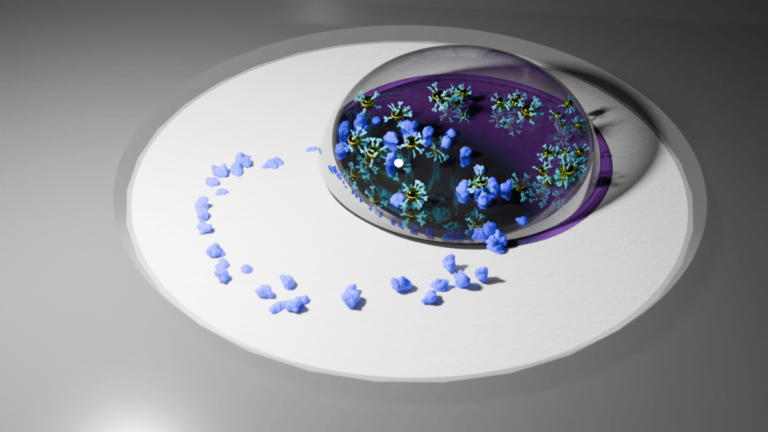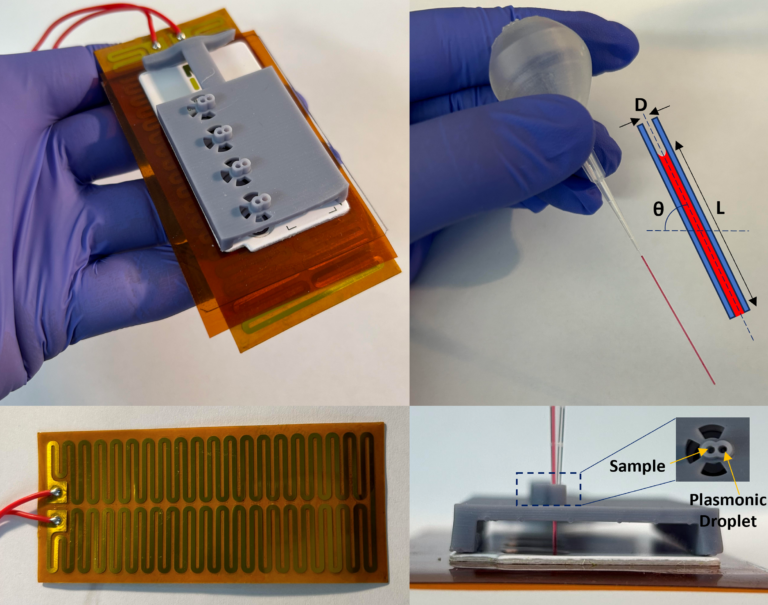From COVID to Cancer, New At-Home Test Spots Disease With Startling Accuracy
A new technology created by UC Berkeley engineers uses the "coffee-ring effect," paired with plasmonics and AI, for rapid diagnostics.

Got a sore throat and the sniffles? The recent rise of rapid at-home tests has made it easier to find out if you have a serious illness like COVID-19 or just a touch of spring allergies.
But while quick and convenient, these at-home tests are less sensitive than those available at the doctor’s office, meaning that you may still test negative even if you are infected.
A solution may come in the form of a new, low-cost biosensing technology that could make rapid at-home tests up to 100 times more sensitive to viruses like COVID-19. The diagnostic could expand rapid screening to other life-threatening conditions like prostate cancer and sepsis, as well.
Created by researchers at the University of California, Berkeley, the test combines a natural evaporation process called the “coffee-ring effect” with plasmonics and AI to detect biomarkers of disease with remarkable precision in just minutes.
“This simple yet effective technique can offer highly accurate results in a fraction of the time compared to traditional diagnostic methods,” said Kamyar Behrouzi, who recently completed a Ph.D. in micro-electromechanical systems and nanoengineering at UC Berkeley. “Our work paves the way for more affordable, accessible diagnostics, especially in low-resource settings.”
The technology was developed with the support of seed funding from the CITRIS and Banatao Institute at UC Berkeley and is described in a recent study published in the journal Nature Communications.

Combining coffee rings and nanoparticles
Look closely at any coffee or wine stain, and you might observe that the outline of the stain is much darker than the interior. This is due to a physical phenomenon called the coffee-ring effect: As a droplet of liquid evaporates, it generates a flow that pushes suspended particles towards the edge of the droplet. If the particles are pigmented, as they are in coffee and wine, the resulting stain will be darker around the rim than in the middle.
In 2020, Behrouzi was developing a biosensor for detecting COVID-19 when he noticed that droplets of his experimental solution were leaving ring-shaped stains as they dried. He realized that this coffee-ring effect could be used to easily concentrate particles of the COVID-19 virus, potentially making them easier to detect.
“We figured out that we could use this coffee-ring effect to build something even better than what we initially set out to create,” Behrouzi said.
The rapid test technology uses tiny particles called plasmonic nanoparticles that interact with light in unique ways. To conduct the test, a user first adds a droplet of liquid containing disease-relevant proteins — such as from a cheek or nasal swab — to a membrane. As the droplet dries, it concentrates any disease biomarkers at the coffee ring. The user then adds a second droplet containing plasmonic nanoparticles that have been engineered to stick to the disease biomarkers. If the biomarkers are present, the nanoparticles will aggregate in certain patterns that change how light interacts with the membrane. This change can be detected by eye or using an AI-powered smartphone app.
The technology gives results in less than 12 minutes and is 100 times more sensitive at detecting COVID-19 than equivalent tests.
“One of the key proteins that we are able to detect with this method is a biomarker of sepsis, a life-threatening inflammatory response to a bacterial infection that can develop rapidly in people over 50,” said study senior author Liwei Lin, a Distinguished Professor of Mechanical Engineering at UC Berkeley. “Every hour is critical, but culturing bacteria to determine the source of the infection can take a few days. Our technique could help doctors detect sepsis in 10 to 15 minutes.”
The researchers have created a prototype of a home testing kit, similar to at-home COVID testing kits, that includes 3D-printed components to help guide the placement of the sample and plasmonic droplets.
“During the COVID-19 pandemic, we relied on at-home tests to know if we were infected or not,” Lin said. “I hope that our technology makes it easier and more accessible for people to regularly screen for conditions like prostate cancer without leaving the home.”
Additional co-authors of the study include Zahra Khodabakhshi Fard, Chun-Ming Chen, Peisheng He and Megan Teng of UC Berkeley.
